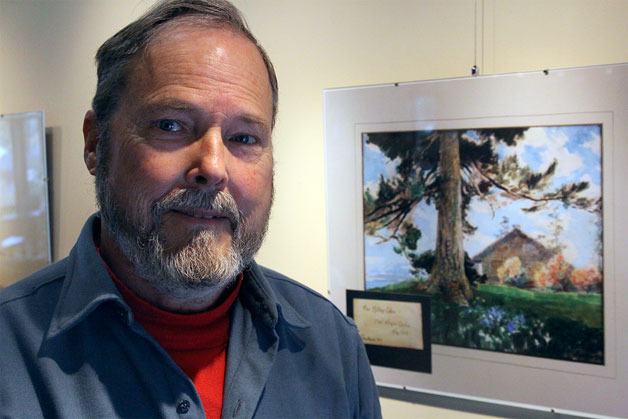He was as mysterious as the fog that snakes its way over Ebey’s Prairie.
Who was Frank Pratt, Jr.?
Lee James, a retired engineer from Coupeville, recently has uncovered answers to a question that puzzled Central Whidbey residents from the time Pratt first arrived on the prairie around 1900 until his death in 1939.
Little had been revealed publicly to shed more light on the wealthy, deeply private, peculiar man who lived on the hilltop of the prairie. That is, until James started exploring. And through James’ diligence, modern technology and cooperation from the person linked to the Pratt family’s past, the fog is starting to clear.
“We have a treasure chest here that has cracked open within the last couple of years,” James said. “It was a little crack at first.”
James has been researching the Pratt family since he first became intrigued by the name two years ago while researching the historic schooner Suva, which Pratt commissioned to be built in 1925.
James’ knowledge and hunger to learn more grew, which led to greater discoveries about an educated man who came from significant wealth in Greenfield, Mass., who once owned much of the land overlooking Ebey’s Landing and who held a deep appreciation of the natural beauty of the landscape and understanding of the importance of preserving that land and historic structures.
In short, James saw Pratt as someone who embodied what the National Park Service intended to protect in the creation of the Ebey’s Landing National Historical Reserve in 1978.
Pratt, an attorney, owned the land that held the Ferry House, the Jenne Farm and the Jacob Ebey House and worked to keep the structures preserved.
“It all leads to the formation of the Historical Reserve, in my opinion,” James said. “He didn’t do it. He didn’t have anything to do with setting up the Historical Reserve, of course. But he set the stage for it. From there, it just made it a whole lot easier for the Reserve to come into being.”
James also learned of Pratt’s deep appreciation for the arts. He recently shared his research about the Pratt family during a presentation at the Coupeville Library titled “From the Hilltop at Ebey’s Prairie 1929 — Happy Holidays!”
The title comes from the words atop a hand-written note written by Pratt to his only son, Robert Pratt, who grew up in Coupeville before moving away.
This month the Coupeville Library is displaying an exhibit that features correspondence, photographs and artwork from the Pratt estate that provide insight into the historic significance and legacy of the family.
The correspondence was eye-opening to James. It includes many letters between Frank Pratt and his close friend, James Norman Hall, co-author of “Mutiny on the Bounty.”
The art collection also got James’ attention. It consists of paintings and sketches by known artists from that time depicting the beauty of the Whidbey landscape.
The collection is owned by Ron Hanson, who inherited the historic Pratt home that is located on the hilltop overlooking the prairie.
When Hanson allowed James to examine the Pratt collection of art, photographs and letters, it shed light on a man he considered was a visionary well ahead of his time.
“He knew what he was looking at when he came here,” James said. “He has a very strong sense of art and history and what was beautiful in essence and he wanted to preserve anything like that.”
When Robert Pratt died in 1999, he bequeathed 554 acres of land on and near the bluff at Ebey’s Landing to the Nature Conservancy.
Like his father, Robert Pratt also was a bit odd and mysterious. Nonetheless, longtime farmer Al Sherman said he should be thought of highly for what he preserved.
“He saved our bacon,” Sherman said.
Sherman was among those who attended James’ talk at the library last week. About 60 people came, more than capacity for the room designated for such events.
Sherman once hunted rabbits with Robert Pratt but knew very little about him personally.
But he wasn’t alone in wanting to learn more.
“What’s interesting is to see this room full of people,” Sherman said.



